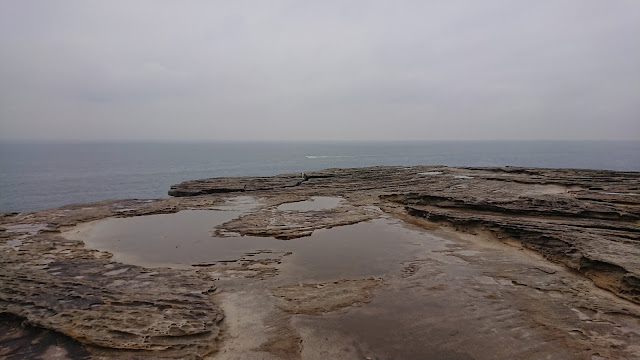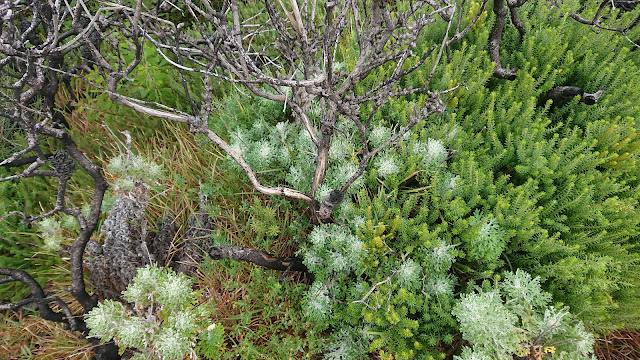These past two weekends we have been out exploring in our backyard.
In contrast to the grandiose mansions and ugly red brick apartment blocks that line the western shores of the bay, the houses of Kurnell are more akin to modest beach huts and holiday homes. There are only a few shops and cafes, including the one at we have a brunch of hamburgers, a combined post office and cafe at the beachfront. A few jets descend over the shimmering flat waters of Botany Bay and into Sydney Airport.
We then drive a short distance further into the Kamay National Park, stopping at the visitors centre. The sculpture walk takes us through the scrub and back along the bay on an exploration of the history of the area.
Memorials mark where Captain Cook and his men landed, the moment that lead to the British colonisation of the Australian continent. But for tens of thousands of years before them it was the Aboriginal people that lived on this land, feeding on its rich natural bounty. The walk celebrates them too, with soundscapes and information panels describing the first people's lives and those of the colonisers.
There are traditional monuments and artistic sculptures that combine with the scrub and sandstone coast, the rock pools where fish dart and anemones wave, while sea snails crawl through the seaweed and algae.
Next Saturday we return, this time to explore another section of the park, driving up to Cape Solander. This is the season for the humpback whales to migrate north from Antarctica and we are fortunate to spot a number of them off the coast, thrashing their tails and blowing spray.
There is a three kilometre walk from the lookout atop Cape Solander to the Cape Baily lighthouse. The walk mostly runs along the clifftops, beneath which the Pacific Ocean seethes against the rocks. Some of the walk is on raised tracks, in other sections you walk over the eroded sandstone.
Numerous puddles and ponds lie along the course. When it rains heavily waterfalls cascade down the cliffs into the ocean. Now it is calm, low clouds the remnants of the light morning rains. Frog voices fill the air, their sources hidden in the grasses which grow beneath the burnt black skeletons of banksia shrubs.
After so long locked inside the house I find myself hypersensitive to the sounds and colours of the landscape, the breeze on my face, the scent of the land. I notice the tiny wildflowers adding pinks, whites, purples and reds to the scrub, the mosses and liverworts in the ponds, the birds flicking through. I watch, mesmerised, as the waves surge over the rock platforms at the base of the cliffs, throwing up clouds of white spray into the air before retreating again.
The lighthouse is automated now, none of the grandeur of Point Lonsdale's tower from earlier in the year. Not that I am disappointed, for the walk itself was the real satisfaction. I watch as some Qantaslink turboprops sink towards the airport, wonder why I never paid this area enough attention when I flew over it before.
Then it is back the way we came, trying to stay ahead of the human voices so that I can listen to nature again. Offshore, a police cruiser tows a ketch that looks like it has seen better days. A nearby dad jokes to his kids that they should look out for pirates on board.
Near the carpark a rapper ignores the sign and dances dangerously near the unstable cliff edges to a prerecorded song, while somebody videos him. Scenes like that renew my fears that people will not do the right thing during this pandemic.
Then it is home, satisfyingly tired after the day's activities.
Today one of Alex's friends comes to visit and we decide to drive out to another new place for us, the Woronora Dam next to the Heathcote National Park. The Woronora River flows past where I nominally work, dividing us from most of the rest of the Sutherland Shire, before meeting the Georges River at the end of our peninsula. It also supplies a lot of our area's drinking water.
We eat a lunch of burgers from the riverside cafe in the suburb of Woronora, below the new bridge that towers above. But the dam isn't here, the river is shallow and will soon reach the Georges.
Onwards we drive. After turning off the Princes Highway, we drive down a paved, but lonely, road through bushland until we reach the Woronora Dam picnic area.
There actually seem to be several picnic areas around the place. Crumbling stone designs hint at the history of the dam, that this was perhaps something more in the past. It is a pity that we can't too much explanation of that history around the site. But the picnic shelters and other facilities appear well kept and a couple of families are using the barbeques to prepare rather late lunches.
To reach the dam wall we cross over a sheer walled chasm whose purpose isn't clear until after we return. For the curved concrete wall does not appear to have any spillways, merely an outlet for the water supply far down below at its base.
The dam levels were definitely not at their peak, though the dam itself is over half full. The waters reflect the dramatic skies above, huge cumulonimbus, the threatened rain and storms of the afternoon. Fortunately, the are yet to arrive and the kids can enjoy the walk across the dam wall and back.
When we recross the chasm I realise that it is the spillway, the water flowing from further back in the lake. That must be an interesting site, but one that would require much more rain than that which threatens now.
We decide to return for an actual picnic sometime in the future. I'm sure it gets busy, but I love the peace of the place today, that hint of a story, the location away from the city.
With the virus resurgent in Victoria and hints of community transmission in New South Wales I am fearful of crowds, of busy indoor venues. These park areas have offered a chance to escape the confines of the house, to refresh the senses without the fear of people. While distant journeys remain largely out of reach I would be more than happy to enjoy these beautiful locations again and again.


























Comments